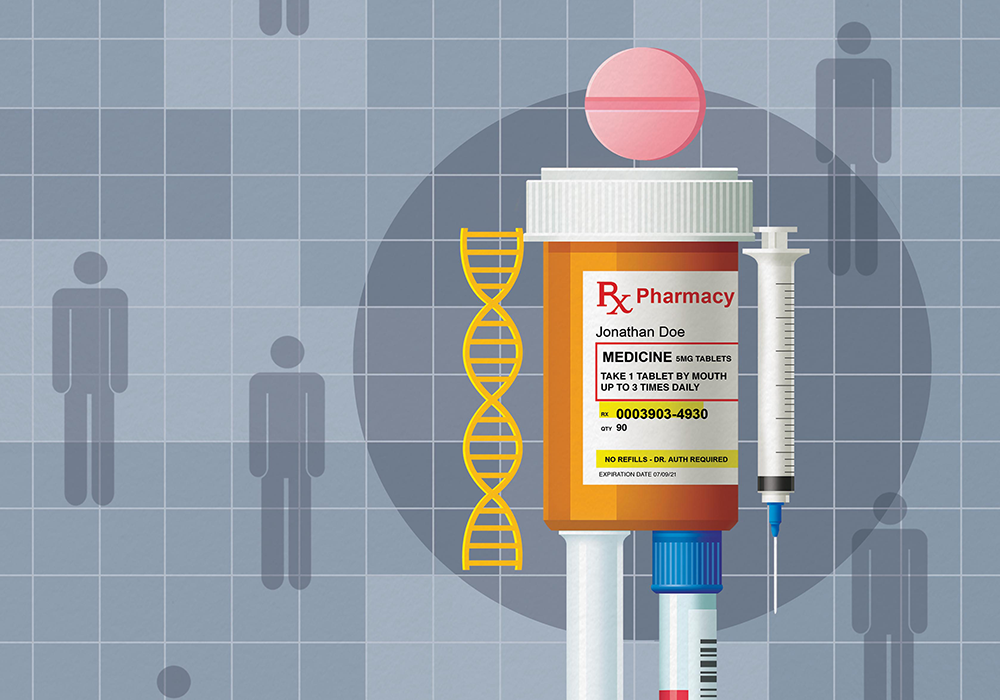Clinical trials provide evidence to support what you do in your work as a nurse every day. They are tools to discover new therapies and identify side effects while considering patient-specific factors like age, comorbidities, race, and sex. They build support for best practices in treatment and patient care.
As with many aspects of oncology, nurses are at the forefront of caring for and supporting patients during clinical trials. Both clinical trials nurses and staff nurses are vital to enrollment, adherence, and informed consent. Here’s how each nursing role divides responsibilities, communicates with each other, and is crucial to patient safety.
Clinical Trials Nurse Role
With job titles such as research nurse coordinator, clinical research nurse, or clinical research coordinator, clinical trials nurses serve as a study coordinator, a role that includes liaising between the principal investigator and site-specific assessment office and collaborating with clinical and nonclinical managers, clinicians, governing body, and trial participants.

“These nurses improve clinical trials operations and outcomes, such as increased enrollment, protocol fidelity, and protecting research participants,” ONS member Elizabeth Ness, MS, BSN, RN, CRN-BC, nurse consultant and educator at the National Cancer Institute’s (NCI’s) Center for Cancer Research in Bethesda, MD, and member of the National Capital Area ONS Chapter, said. “Understanding the science and employing the nursing process and clinical skills are keys to success.”
According to Ness, clinical trials nurses are critical to preventing delays in study completion and answering the research questions that move science forward. A typical day in the position includes:
- Attending tumor board or pathology reviews
- Ensuring all staff and patients follow trial protocols
- Meeting with the care team to review labs, test results, and adverse events
- Organizing calendars, pill diaries, lab orders, and teaching materials
- Quality-control checking the data manager’s entries
In addition to ONS, three professional societies support oncology clinical trials nurses, Ness said. “I would recommend that research nurses, or any nurse employed in a clinical research setting, explore the International Association of Clinical Research Nurses (IACRN) website. Other resources to learn more about clinical research include the Society of Clinical Research Associates and the Association of Clinical Research Professionals (ACRP).”
IACRN published its core curriculum in October 2021 as the CRN Certification Handbook, and clinical research nurses can obtain certification through the Clinical Research Nurse Certification Council.
Staff Nurse Role
As their regular direct contact, staff nurses may have more interaction with individual research participants than other members of the research team. They administer investigational medications, perform detailed clinical assessments, collect research samples, and provide additional or specialized care based on a participant’s response to a study intervention.

“The staff nurses are there when the patient is receiving the investigational medication and report any adverse events,” ONS member Frances Brogan, MSN, RN, OCN®, CCRP, director of clinical research operations in the Clinical Protocol and Data Management Office at the Herbert Irving Comprehensive Cancer Center at NewYork-Presbyterian/Columbia University Irving Medical Center and member of the New York City ONS Chapter, said. “Collaboration between the staff and research nurses is very important, and open communication is key.”
Brogan said that patient advocacy and education are essential elements of the staff nurse’s role.
“After the physician introduces the clinical trial and the patient has ample time to review the consent form, the nurses at our center perform the actual consenting and documentation,” Brogan said. “The nurse ensures that the patient and their family understand the expectations of the clinical trial, goals, side effects, and all other aspects of the protocol.”
Informed consent is an ongoing process, Brogan said, and the staff nurse provides education about the study, standard-of-care medications, and schedule of testing throughout the trial.
“At my institution, oncology nurses frequently review how the patient is feeling during the trial and assess any adverse events. The nurse then documents the adverse event with grade, start and stop times, and attribution and confirms with the physician,” Brogan said. “The clinical trials nurse prepares an in-service for trial to the infusion and floor nurses, emphasizing the investigational medication, trial schema, infusion timing, expected side effects, and allowed treatment.”
Overcoming Enrollment Barriers
Some of the shared responsibilities across both roles involve removing barriers to participation and ensuring that patients follow the study protocols.
Most patients (94%) enrolled in clinical trials reported that they would participate in another if asked. However, Ness said, multiple factors influence participant recruitment, ranging from patient-specific barriers (e.g., lack of trust in the medical and research communities, concerns about side effects) and provider-centered barriers (e.g., lack of awareness or knowledge about clinical trials, loss of clinical care decisionmaking) to protocol-focused barriers (e.g., restrictive eligibility criteria, too many visits or procedures).
Up to 86% of all clinical trials fail to finish on time, and 60% of clinical trials are delayed or terminated because of lack of enrollment. Approximately 20% of adult patients with cancer are eligible for a clinical trial, but historically only 2%–8% enroll.
Ness said that providing culture- and language-appropriate information about clinical trials and broadening the eligibility criteria help.
“To this last effort, the American Society of Clinical Oncology and Friends of Cancer Research partnered in 2016 to evaluate current eligibility criteria and determine how to broaden them,” Ness said.
The collaboration’s most recent recommendations address:
- Lab reference ranges and test intervals
- Performance status
- Prior therapies
- Washout periods (the length of time that participants cannot receive any treatment before receiving the trial’s experimental therapy) and concomitant medications
Facilitating Adherence and Retention
“Assisting the research team in overcoming patients’ misconceptions about clinical trials is very important to adherence and retention,” Brogan said. “Every medication has gone through a clinical trial to receive approval, and I think this is where people tend to forget.”
Misunderstanding the protocol process, forgetfulness, and lack of awareness about the importance of taking medication as prescribed are some of the greatest contributors to patient nonadherence in oncology clinical trials. Patients with cancer also identified relational communication with research physicians and nurses as a significant factor in their thoughts about remaining enrolled or dropping out of a clinical trial.
“Our nurses are key to patient adherence and retention,” Brogan said. “Providing constant communication and education is very important so that the patient feels they are being monitored and cared for appropriately. Understanding the importance of clinical trials is also vital so that nurses do not further foster a patient’s misunderstanding about the process.”
Brogan and Ness both said that advancements in telehealth also alleviated some of the barriers.
“Telehealth can be used for a consultation with a principal investigator or other members of the research team, saving the patient cost and time to initially learn as much as they can about what might be available to them before they decide to travel,” Ness said. “It has also allowed for patients to consent remotely and then have many of their screening procedures conducted at a facility closer to home.”
“Prior to the pandemic, telehealth visits for clinical trials were rare but have now been helpful in allowing the patient to be assessed without coming into the center,” Brogan said. “I believe in the future this will became more standard and will allow for a more diverse group of patient participation.”
Community-Based Trials
“Community-based trials are crucial to the success of clinical trial programs in general,” Brogan said. “Making sure the community has access to cancer care prevention and treatment is extremely important and requires a dedicated team.”
Brogan and Ness said that community-based trials allow for increased minority participation. The Community Health Advisor model and Community-Based Participatory Research approach are both proven to increase recruitment and retention of minority, low-income, and rural patients in clinical trials.
The models use members of a patient’s own community as an approachable guide to understand and be comfortable with clinical trials. In a 2014 study, volunteer community health advisors were trained on how to be research partners, and their guidance significantly improved adherence rates in the intervention group (80%) compared to the control group (65%). Researchers in a 2013 study found that training community health educators from minority populations increased the community’s overall understanding of the value of clinical trials.
“Most cancer care occurs in the community, so I see huge benefits in conducting clinical trials there,” Ness said. “I don’t see a difference in the validity of community versus academic trials. Community-based research is integral to translational research, and it has a place alongside academic-based clinical trials.”
No matter the setting, working with clinical trials offers many rewards for the nurse, too. “Being an oncology research nurse is a demanding but extremely rewarding position,” Brogan said. “The exposure to different aspects of oncology, from a first-inhuman trial to postmarketing, allows us to grow and flourish. The challenges of providing care to a vulnerable patient population enables the nurse to use every aspect of their training.”






